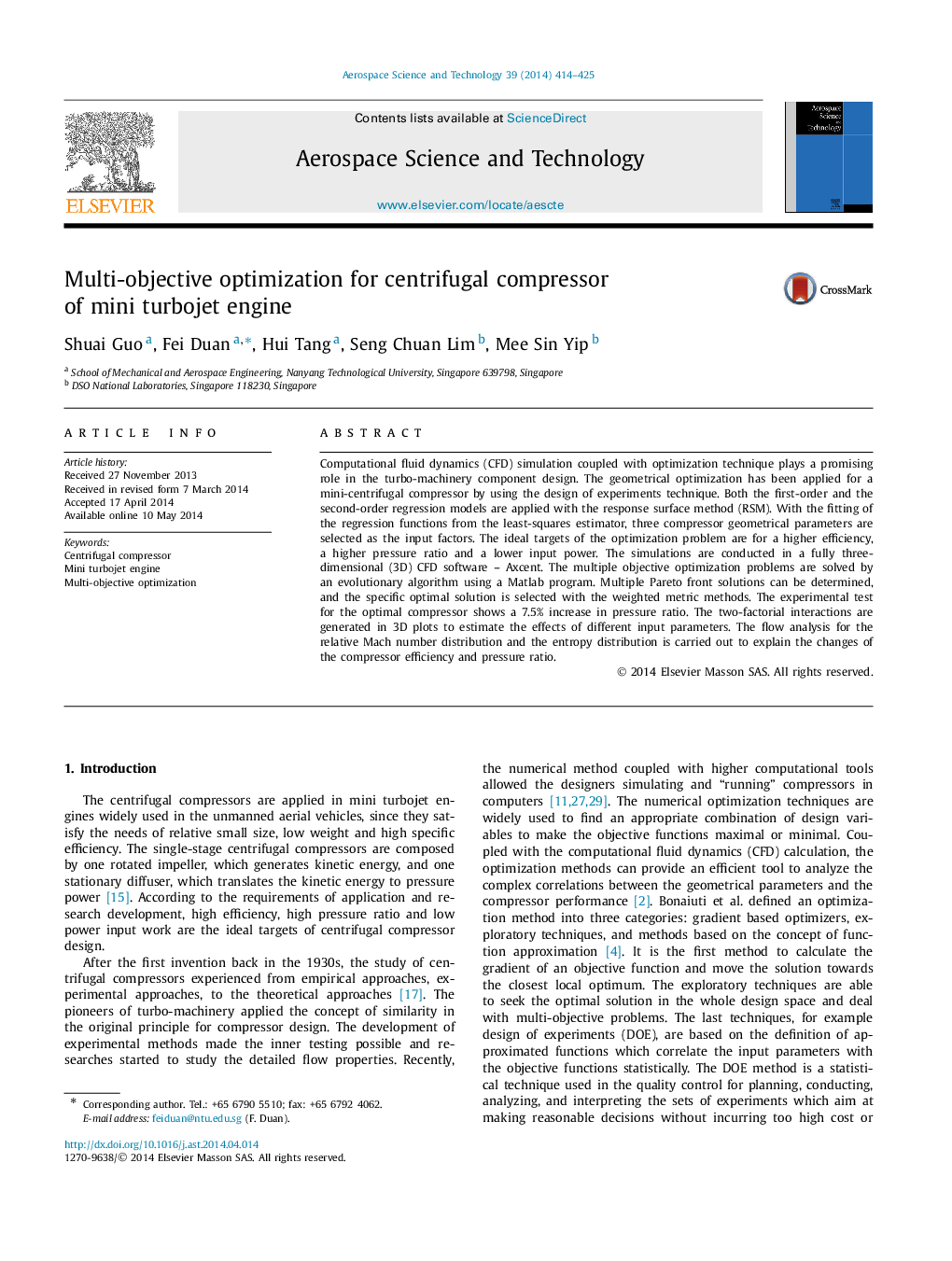| Article ID | Journal | Published Year | Pages | File Type |
|---|---|---|---|---|
| 1717994 | Aerospace Science and Technology | 2014 | 12 Pages |
Computational fluid dynamics (CFD) simulation coupled with optimization technique plays a promising role in the turbo-machinery component design. The geometrical optimization has been applied for a mini-centrifugal compressor by using the design of experiments technique. Both the first-order and the second-order regression models are applied with the response surface method (RSM). With the fitting of the regression functions from the least-squares estimator, three compressor geometrical parameters are selected as the input factors. The ideal targets of the optimization problem are for a higher efficiency, a higher pressure ratio and a lower input power. The simulations are conducted in a fully three-dimensional (3D) CFD software – Axcent. The multiple objective optimization problems are solved by an evolutionary algorithm using a Matlab program. Multiple Pareto front solutions can be determined, and the specific optimal solution is selected with the weighted metric methods. The experimental test for the optimal compressor shows a 7.5% increase in pressure ratio. The two-factorial interactions are generated in 3D plots to estimate the effects of different input parameters. The flow analysis for the relative Mach number distribution and the entropy distribution is carried out to explain the changes of the compressor efficiency and pressure ratio.
